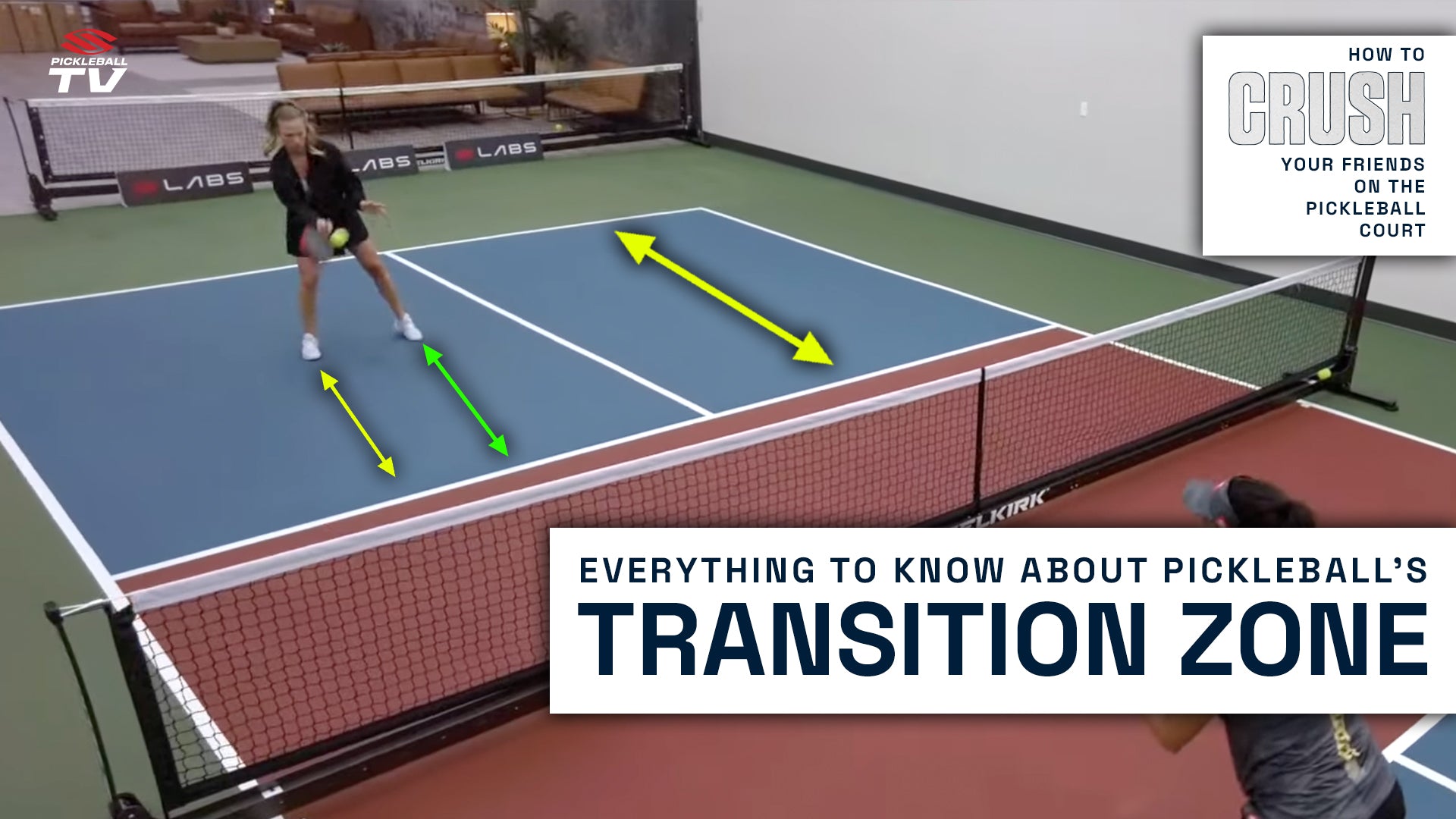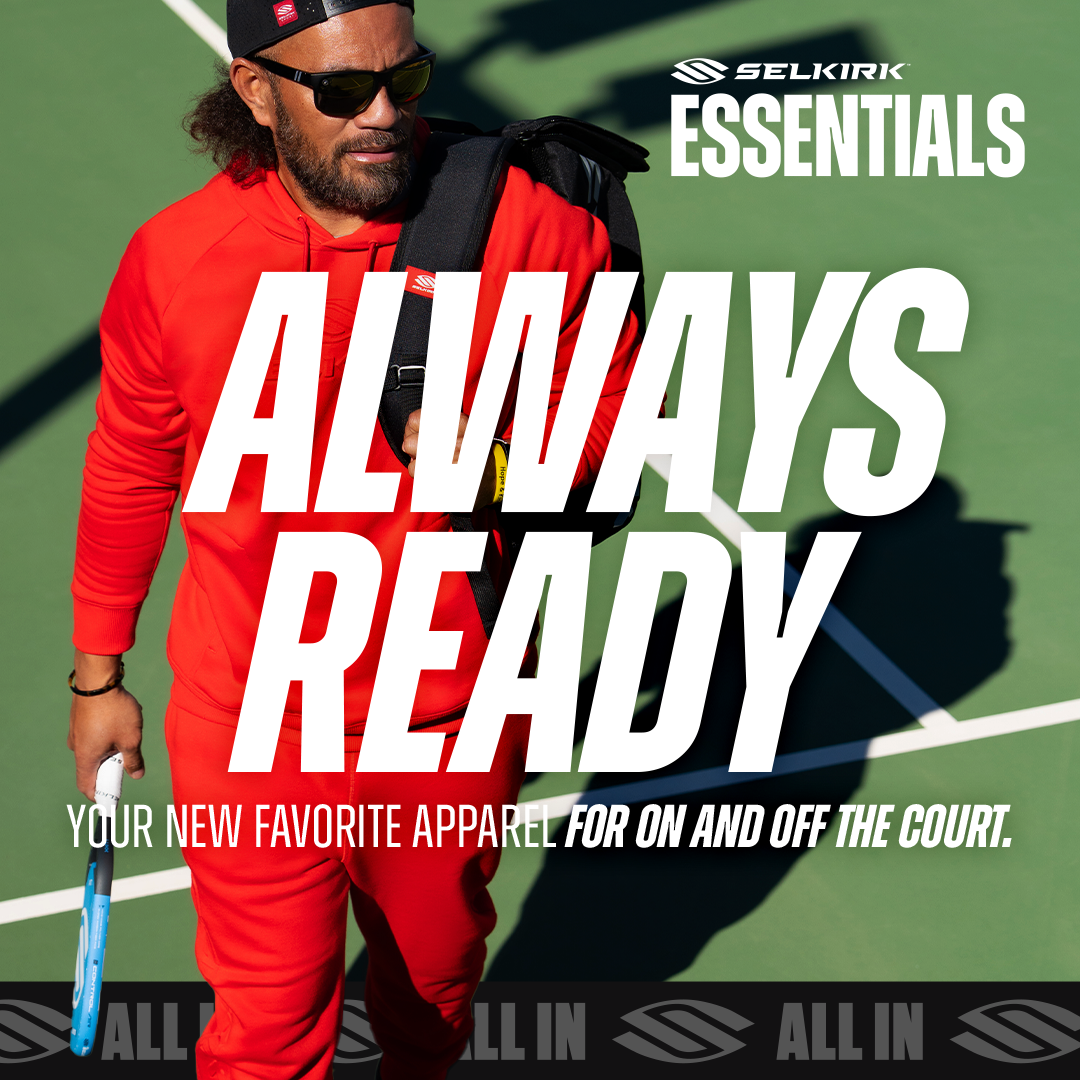
We’ve all been there — you hit a good reset and you rush confidently to the kitchen, ready to start hitting aggressive volleys.
Except your opponent hits the ball more quickly than you thought. Before you know it, the ball is hitting your feet before you’ve even taken three steps toward the kitchen.
Instead of methodically working your way through the transition zone, you were too eager to get from the baseline to the kitchen.
In the latest episode of her “How to Crush your Friends on the Pickleball Course” course on Selkirk TV, professional pickleball team owner Kaitlyn Kerr teaches viewers how to navigate the transition zone.
What is the transition zone?
Also known as “no man’s land,” the transition zone is located between the baseline and the kitchen line. This is the zone you have to move through — or transition through — to get to the kitchen.
You are not as much of a threat on the pickleball court when you’re in the transition zone as you are when you get to the kitchen because you can’t take balls out of the air and it’s harder to initiate aggressive points.
Where should I hit the ball if I’m in the transition zone?
If you are in the transition zone, odds are, you’re playing defense while your opponent is likely already at the kitchen line on their side of the net.
This could be because your team is serving so you need to work your way up, or perhaps you hit a dink too high and were forced to back off the kitchen line.
Whatever the reason, it’s important to know how to get back to the kitchen so you can transition from defense to offense.
The easiest way to do this is to reset any ball hit your way back into your opponent’s kitchen. Dropping the ball into the kitchen allows you to work your way toward the kitchen.
It’s important to note that you may not be able to move to the kitchen after your first drop. It may take a few to make it to the line, but you should be able to gain a little ground after each reset.
Tips for the transition zone
Although it’s tempting to get to the kitchen line as quickly as possible, you should never hit the ball while you’re running if you can avoid it.
So, when you see your opponent is about to hit the ball, stop your forward momentum and plant your feet so that you are steady and ready for the next shot.
Next, keep your paddle out in front of your body and slightly lower than normal so that you are ready to receive the ball. Odds are, your opponent will aim a ball at your feet rather than your body because you could duck out of the way, leaving the ball to fly off the back of the court.
So, lowering your paddle toward your knees will help you be better prepared for any shots about to come your way. Remember to keep your grip loose so that you can absorb the pace of the ball as you reset it.
Drills for the transition zone
Have your drilling partner stand at the kitchen line on one side of the net while you stand in the transition zone on the other. Your partner should hit hard shots toward you, either on the ground or low to the ground.
You should focus on hitting every shot back into the kitchen. Aim to take the pace off the ball so that it falls slowly into the kitchen.
To start off, do not move forward. Just stay in the transition zone and focus on resets. Take note of what was successful and try to replicate it.
When you feel comfortable with your resets, start moving forward. Remember, you may not be able to reach the kitchen on the first try. Stop right before your partner is about to hit and prepare for another reset.
Again, take note of what was and wasn’t successful. Did you hit the ball while moving? If so, how successful was it? Is your grip too tight?
Once you perfect the drill, you’re ready to take the tips into a game scenario where you can crush your friends on the pickleball court.
Download the Selkirk TV app HERE to watch the complete episode and many other Selkirk TV original shows, podcasts, lesson series from the pros, and much more.
























































